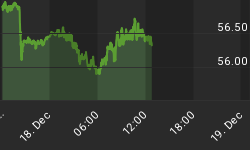After a harrowing week for stock markets, things seem to be turning around. On Monday, the Dow Jones Industrial Average jumped by just over 1200 points, making it the largest single-day gain in its history. And Tuesday, despite opening lower, is already paring its losses following news that the Federal Reserve has cut interest rates by 50 basis points.
As investors increase their bets for central bank easing, there's an ongoing discussion regarding whether the Fed needs to accede to the stress with as much as a full percentage point cut this year or wait to see whether the jangling sentiment over the coronavirus subsides.
Goldman Sachs tends to think so, anticipating more significant cuts in the first half of the year. Goldman claimed the Fed could eventually reduce interest rates by 100 basis points in the first half of the year, up from the 75 basis points it forecast for Friday.
Behind Goldman's modification of its overview: Fed Chairman Jerome Powell's Friday declaration that the Fed would "act as appropriate" to support the U.S. economy.
What's Next?
Trump has repeatedly called for the Fed to slash interest rates, and while the question appears to be resolved that the Fed is poised to move aggressively to lift up the economy, it's less clear how effective or even essential it is at this moment.
The Federal Reserve is cuting but must further ease and, most importantly, come into line with other countries/competitors. We are not playing on a level field. Not fair to USA. It is finally time for the Federal Reserve to LEAD. More easing and cutting!
— Donald J. Trump (@realDonaldTrump) March 3, 2020
Nevertheless, as the Fed has mentioned, the longer-term effect of a virus-induced slowdown is challenging to assess. Even after last week's Wall Street meltdown, the economic data was mostly positive as the Citi Economic Surprise Index was following around a two-year high of how reports were holding up against expectations.
Obviously, the Fed can't cure the Covid-19 infection, however, it can reduce its impact in the broader economy by easing other constraints. After all, doing this is the Fed's primary job.
By Michael Kern for Safehaven.com
More Top Reads From Safehaven.com:
















